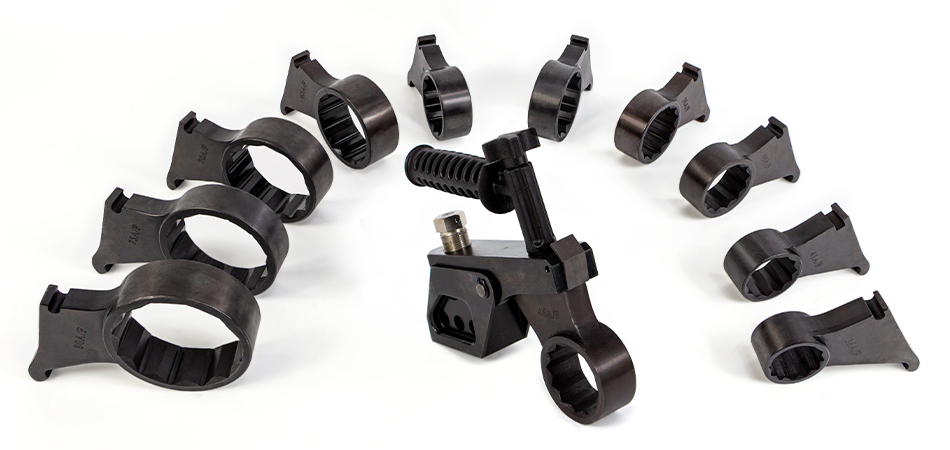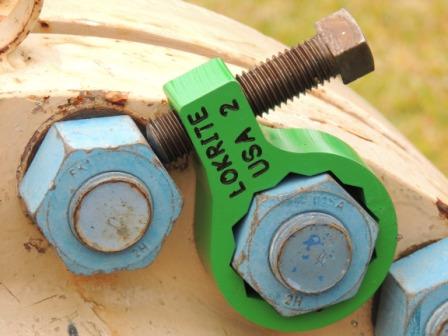A backup wrench is a tool designed to provide additional grip and stability when tightening or loosening fasteners, such as bolts or nuts. It is commonly used in situations where a standard wrench or socket is not able to securely grip the fastener due to factors such as corrosion, burrs, or limited access. Backup wrenches come in various shapes, sizes, and materials, and are a valuable addition to any toolkit for those working in construction, automotive, or industrial settings. They can help ensure a tight and secure connection, preventing damage to the fastener or surrounding components.
A backup wrench is a type of wrench that is used as a back-up in case the primary tool fails. It is usually smaller and lighter than the primary tool, making it easy to carry around.
A backup wrench is a special type of wrench that is used to grip and turn objects when the primary tool, such as a socket wrench, slips or fails. Backup wrenches are typically made of hardened steel and have a variety of jaws, such as V-shaped or U-shaped jaws, to accommodate different types of objects.
Backup wrenches are an essential tool for mechanics and other professionals who work with machinery on a regular basis.
They can be used to loosen or tighten bolts, nuts, screws, and other fasteners. In some cases, backup wrenches can also be used to grip and turn pipes and other cylindrical objects.
While backup wrenches are not meant to replace primary tools like socket wrenches, they can be invaluable in situations where the primary tool fails or slips.
If you work with machinery regularly, it is important to have a backup wrench on hand in case you need it.

Credit: www.radialtorque.eu
What is a Drive Torque Wrench?
A drive torque wrench is a tool used to apply a specific amount of torque to a fastener such as a bolt or a nut. It is often used in situations where it is important to ensure that the fastener is tightened to the correct level, such as in automotive or aerospace applications. The drive torque wrench typically consists of two parts: a handle and an adapter.
The handle is usually ratcheting, meaning that it can be turned in either direction. The adapter is attached to the handle and has a socket on one end that fits over the head of the fastener. To use the drive torque wrench, first set the desired torque level using a knob or dial on the handle.
Then, attach the socket to the fastener and turn the handle until it clicks, indicating that the correct amount of torque has been applied.
Should a Wrench Be Pulled Or Pushed?
When it comes to wrenches, there is a lot of debate about whether it is better to pull or push. The truth is, it depends on the situation. If you are working in a tight space, it may be easier to pull the wrench so that you have more control over it.
However, if you are working with a large nut or bolt, you may find that pushing the wrench is more effective. Ultimately, it is up to you to decide which method works best for you.
What is a Bolt Wrench?
A bolt wrench is a type of wrench that is used to loosen or tighten bolts. It is a very versatile tool that can be used on a variety of different types of bolts. Bolt wrenches come in a variety of sizes, so it is important to choose the right size for the job at hand.
There are also different types of bolt wrenches, such as ratcheting wrenches, which can make the job easier.
Does It Matter How You Hold a Wrench?
There are a few different ways to hold a wrench, and each has its own advantages and disadvantages. The most common way to hold a wrench is with the handle perpendicular to the jaws, as this gives the most leverage. However, this can be difficult to do in tight spaces.
Another way to hold a wrench is with the handle parallel to the jaws. This is easier to do in tight spaces, but it doesn’t give as much leverage. Finally, you can also hold a wrench by its head, which gives you more control but less leverage.
Ultimately, it doesn’t really matter how you hold a wrench, as long as you’re comfortable and able to get the job done.
Lokrite Backup Wrench – Specialty Maintenance Products
Lokrite Backup Wrench
When you need a quick and easy way to back up your wrench, the Lokrite Backup Wrench is the perfect tool for the job. This handy little gadget attaches to your belt or pocket and provides a convenient way to store your wrench when you’re not using it. Simply slip the wrench into the slot on the side of the device and it will stay securely in place until you’re ready to use it again.
The Lokrite Backup Wrench is made from durable materials and features a built-in clip that makes it easy to attach to your clothing. It’s also small enough to fit easily into your pocket, so you can take it with you wherever you go. Whether you’re a professional tradesman or a DIY enthusiast, the Lokrite Backup Wrench is an essential tool for anyone who uses a wrench on a regular basis.
Hands-Free Backup Wrench
Are you looking for a new and improved way to back up your vehicle? If so, then you may want to consider investing in a hands free backup wrench. This innovative tool is designed to make backing up your car or truck easier than ever before.
Here are some of the key benefits of using a hands free backup wrench: 1. They’re Easy to Use simply place the tip of the wrench on the ground behind your vehicle, and then press and hold the button on the handle.
The jaws of the wrench will open and close automatically, providing you with a perfect fit every time. There’s no need to worry about fumbling around with traditional wrenches anymore! 2. They’re Incredibly Durable made from high-quality materials that can withstand years of heavy use.
Plus, they feature a rust-resistant finish that will keep them looking like new for seasons to come. 3. They’re Perfect for Any Vehicle whether you have a car, SUV, or truck, these wrenches will do the trick! They’re also great for RVs and other large vehicles.
How to Use a Backup Wrench
When you need to use a backup wrench, the first thing you need to do is find the right size. Once you have the right size, place it over the bolt head and start turning. As you turn, the wrench will bite into the bolt head and start turning it.
Keep turning until the bolt is loose enough to remove by hand.
Hytorc Backup Wrench
If you’re in the market for a high-quality backup wrench, the Hytorc Backup Wrench is a great option to consider. This wrench is designed for use with Hytorc hydraulic torque tools, and it’s built to last. The body of the wrench is made from forged steel for strength and durability, and it features a black oxide finish that resists corrosion.
The jaws of the wrench are serrated for a better grip, and they’re also replaceable if they ever wear out. The Hytorc Backup Wrench is a well-built tool that will serve you well for many years to come.
Conclusion
A backup wrench is a great tool to have in your toolbox. It’s a versatile wrench that can be used for a variety of tasks, from tightening bolts to loosening them. If you’re looking for a durable and reliable wrench, then the backup wrench is a perfect choice.



